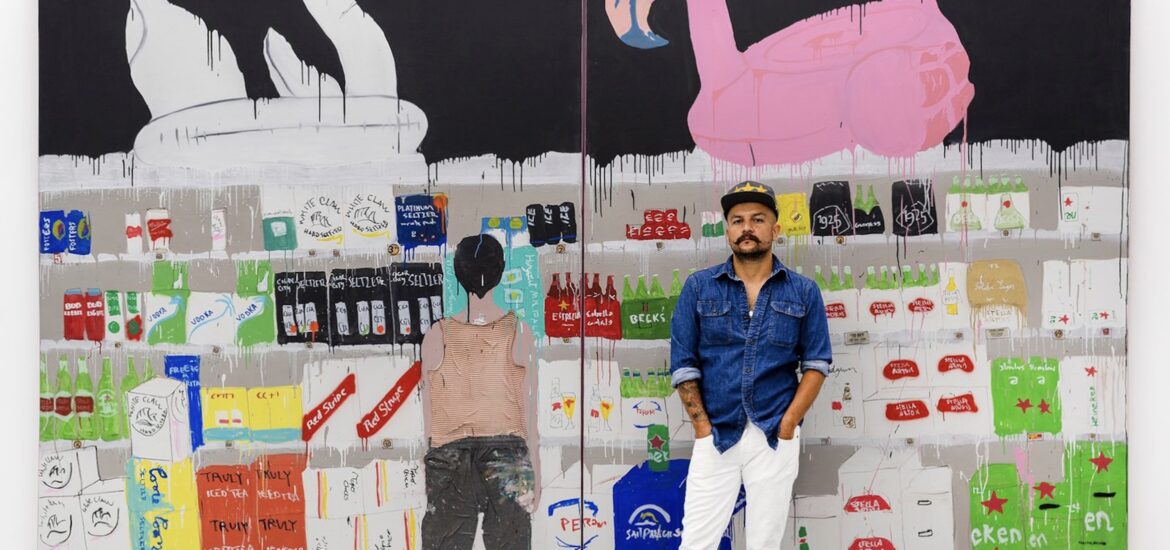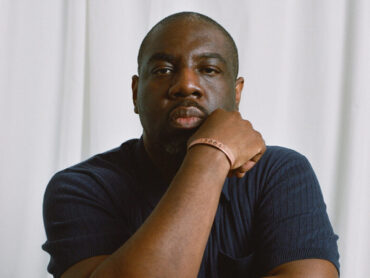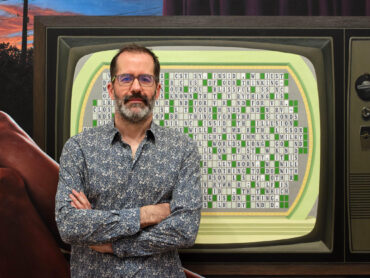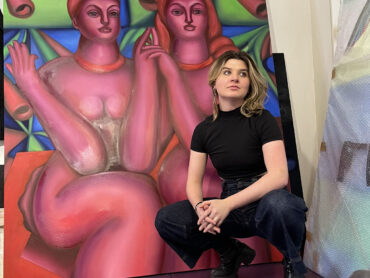“What is real?” was the first question I asked Hermes Berrío when we sat down to chat. The conversation that evolved from that one question was insightful, inspirational, and educational. To begin, I suppose it would help to clarify why I asked him that question. I read one of his interviews where he stated, “Reality is all around us, but to understand what it means truly, I had to become a husband and a father.” It made me ponder his meaning and interpretation of reality based on family.
Hermes’ works are all about family, but not just his immediate family; he also paints the family that is his neighborhood, his surroundings, and his experiences. It is as if a cinematographer would paint a movie instead of film it. This movie shows what he is living and witnessing daily.
In the everyday activities, he strives to capture and expose the beauty of the moments that get suppressed and come back to us with a familiar scent, that transports us to another time, another place, all but forgotten. Sometimes the simplest day-to-day moments are the ones we later miss the most. That is what Hermes Berrío documents and paints, the simplistic beauty of our everyday life we all tend to forget.
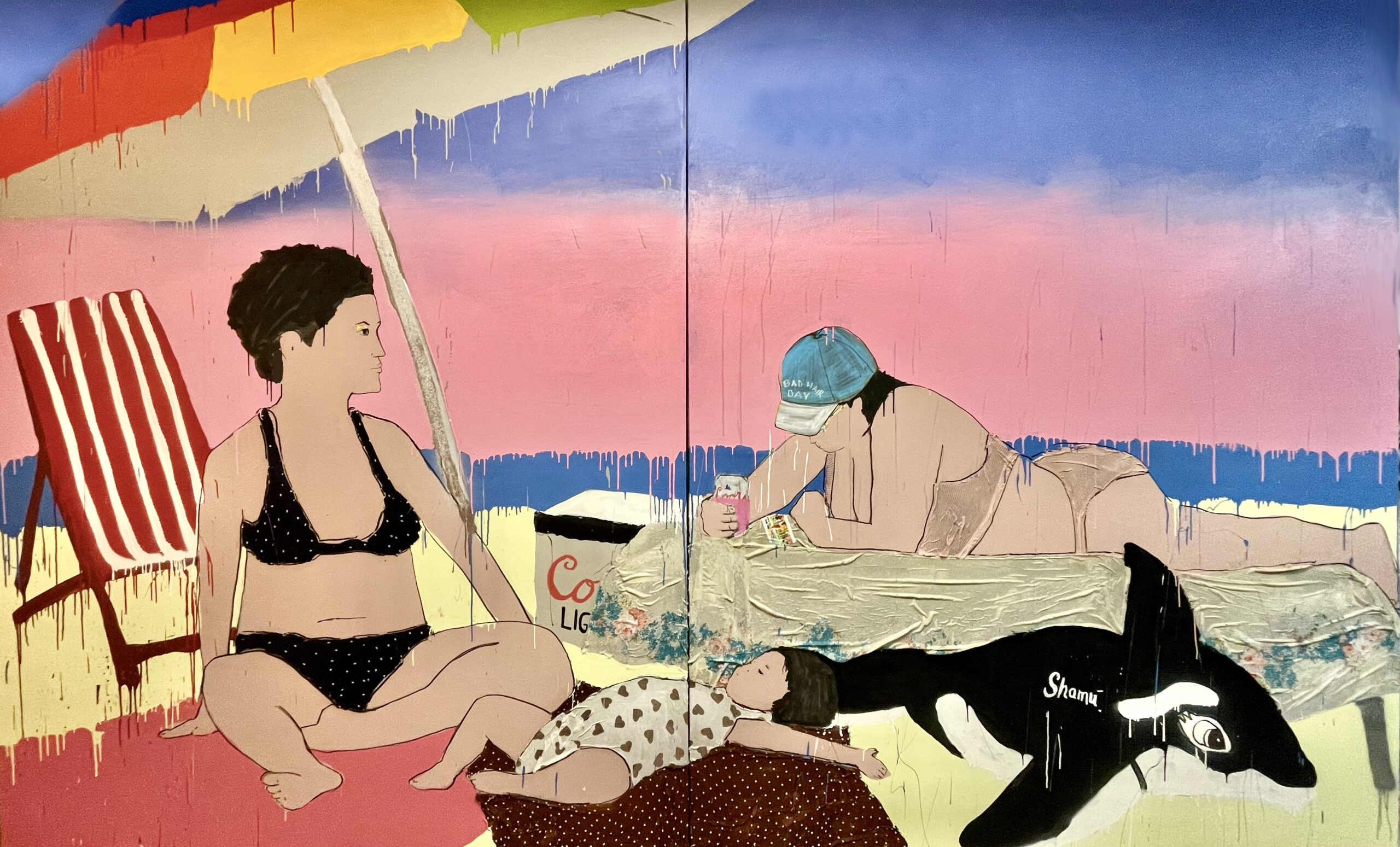
“Pink Sky Pics, Pink Sky Pics Everywhere”
As he expresses, “My work is completely based on what is real to me, but what is real to me? After a deep inner search, I wondered where does real come from? I realized that the word real is a very subjective word that may not apply to only one moment I’m living. Reality can be a dream, a fantasy, or an abstract plane. What is real to you may not be real to me.”
It is no wonder Hermes wanted to be an anthropologist when he was growing up, driven by his passion for the universe and the infinite. In my opinion, he is an anthropologist in a sense, studying and documenting our humanity and connecting the viewer with it, through his art.
Hermes has seen his fair share of difficulties in the pursuit of defining what is substantial to him and his art. This includes the heart-breaking loss of his infant son. As he explains, this was one of the most challenging periods of his life. He lost his desire to paint for months as he could not find a connection to art within the sadness.
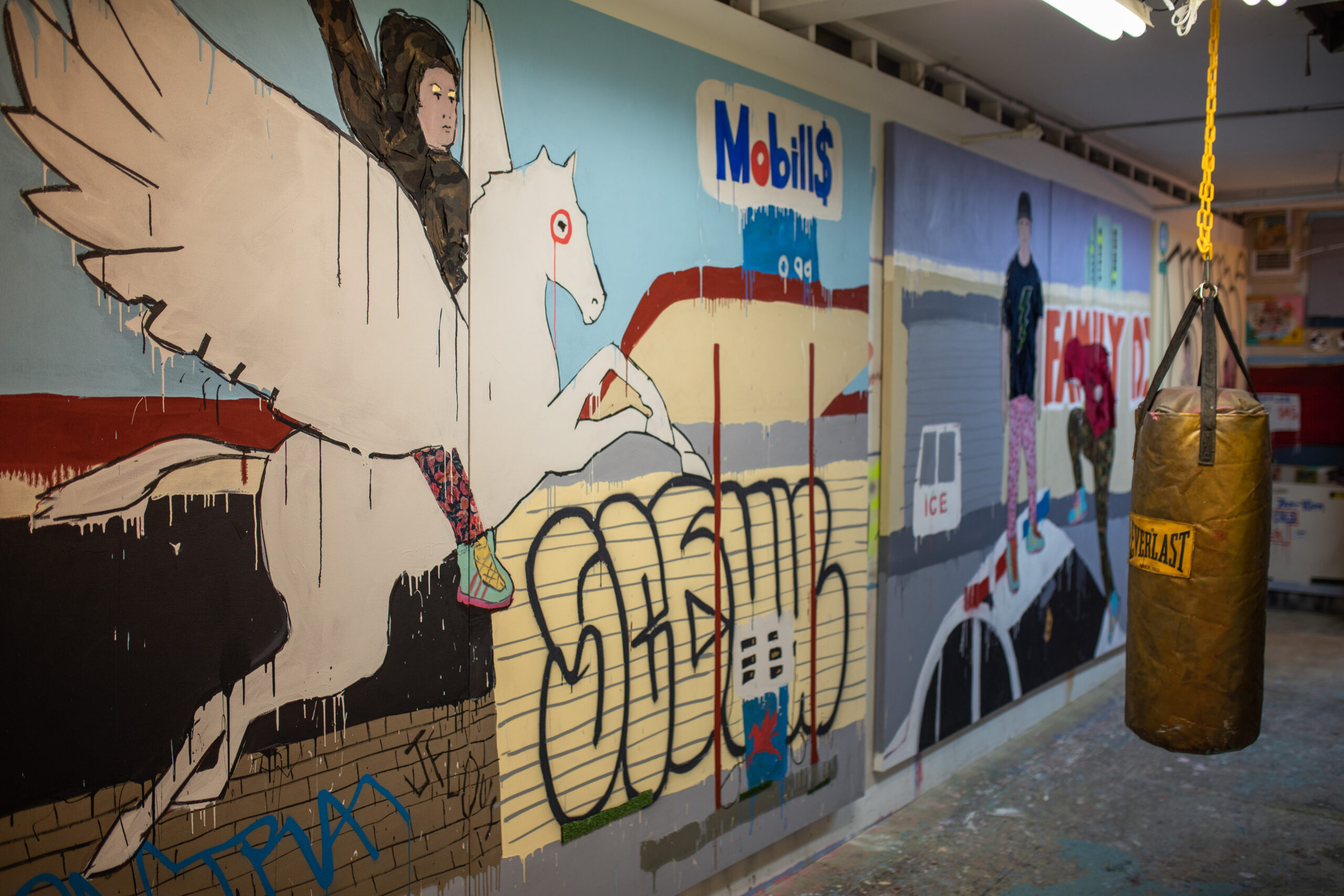
Hermes’ Studio at the Fountainhead Studios, Miami
A self-described devoted man, he lost his desire to pray, questioning God and the reasons for such loss. Yet somehow, he found refuge in the love and positiveness of the ones he still had around. He took that sadness and turned it into gratitude for what he still has, family.
He shared with me a moment that happened to him a few days before while bicycling to Virginia Key, where he went to watch the sunrise.
“I began to pray a hail Mary, but I said to myself, I’m going to just be quiet. Nature, what I’m hearing at this moment is my mantra: the waves, the breeze, the air around me. I realized, wow, this is also a form of praying and giving thanks to God.”
Everything that surrounded him was something to be grateful for. To be present was the Hail Mary. I found this to be one of the most profound moments in our conversation. Hermes sees gratefulness as the cornerstone of his life. No matter the hardship, the rejection, the loss, the difficulty, his art expresses the appreciation for the day-to-day life he gets to enjoy with those loved ones around him.
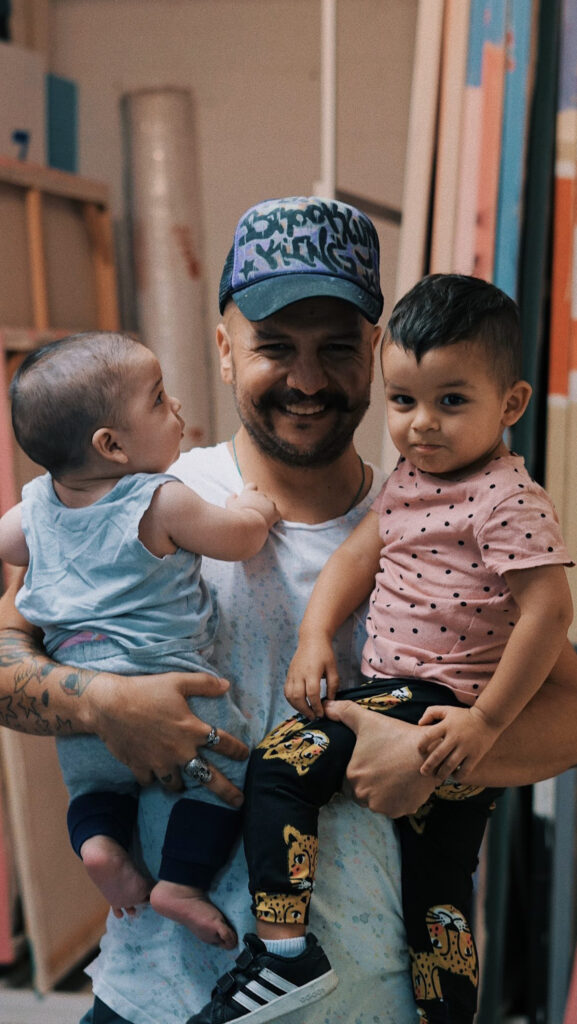
Hermes Berrío and his children
His works are large and then larger in nature. The subjects of his paintings are usually life-sized, allowing the canvas to transmit the energy of a palpable person when you stand in front of them.
“It all starts with a photograph,” he says.
His process begins with documenting his surroundings, taking pictures on his phone, and then selecting the photographs that speak to him the most. From there, the idea of a painting is born. He does not cage himself to a style or the pursuit of one idea, but he lets it flow in his words.
“The canvas tells you where it needs to be enhanced.”
All of his paintings have an element of mixed media, something he defines as “Up-cycle.” I asked him why that word? He explained that most people call it recycling or repurposing, but he believes that he is using materials for a better purpose, so he is “Up-cycling.”

“I’m having a Blast!” 80×96″
VS- What is real?
HB- A timeless illusion
VS-How did becoming a father help you understand the reality around you?
HB- “Since I’m a father, I realized that the important things in life are very simple. Life is giving you a boost to keep going, and you have to hold on tight!”
VS- You capture the significance of everyday life. Why is this important considering the current political and global circumstances?
HB- “My work validates the responsibility of the visual artist as the historian of our time; it is a recording device of the world today. By absorbing and processing the world around me, ideas come through me and back into the world, pointing out what goes typically unnoticed.”
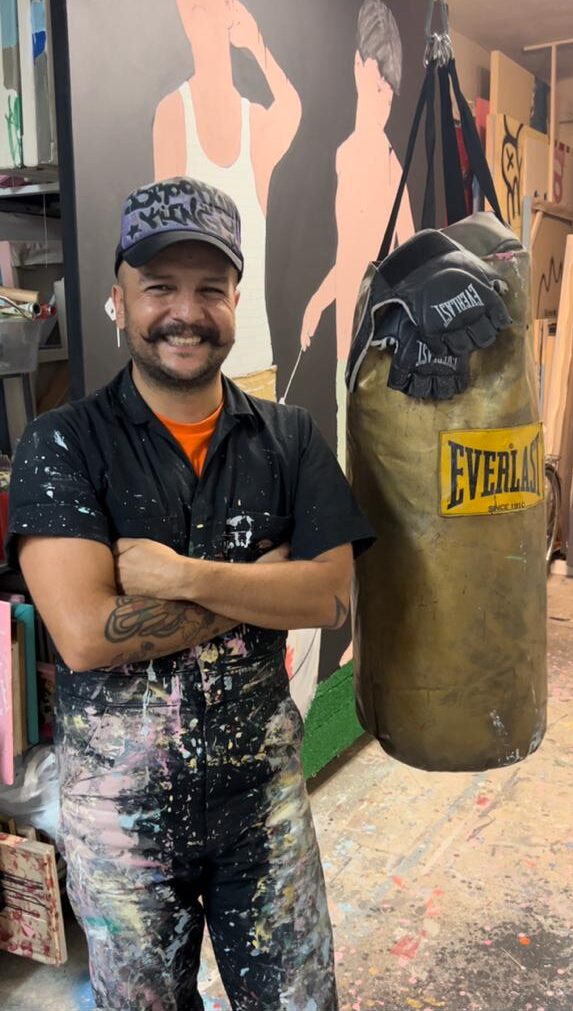
Hermes Berrío in his Studio
VS- What is everyday life like for you as you observe the neighborhood?
HB- “It is the backbone of my vision. From street signs to abandoned buildings, from graffiti on the walls to ordinary situations, is a reflection of the human condition. Finding inspiration in these unusual yet commonplace experiences, I explore the complexity of such simple moments.”
VB- There is an energy to your paintings. Perhaps the large format aids in feeling like a person is standing in front of the viewer. How do you hook and transfer that into the canvas when you do your works?
HB- “The subjects of these paintings are ordinary people, real people that live and do what everyday people do. I look for commonplace experiences, where you can see in their expressions and poses their true being, the meaning of their extraordinary life. By exploring the complexity of these minimal moments between the painted and the painter, I construe their time as a way of dreaming awake; that is what I look for and seize. The way I connect is by being honest with myself as an artist. If I’m keeping it true-to-life, it will be felt in the art I’m making. Therefore, I cannot paint winter in summer.”
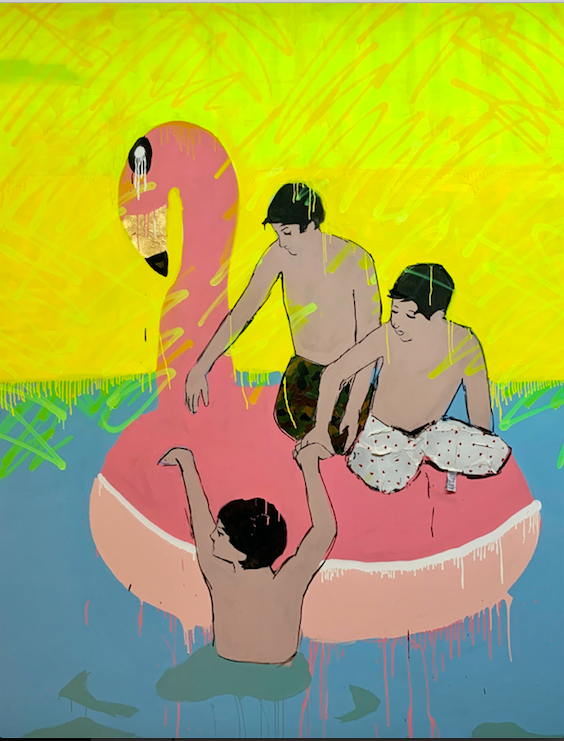
“Fact, there is no graceful way to get on a boat Float” 96×80″
VS- Some of the titles of your works have a bit of dark irony in them; why?
HB- “The titles of my work re-imagine, re-arrange, and transition visions of a cultural and personal landscape, seeking new ways to interpret one’s truth visually. I always want to connect with people through simplicity. I’ve never liked complicated art, where you must read a whole book to understand it. I believe that the titles being common phrases or sayings make it easier for the viewer to digest the work, which is also important because I believe art is for everyone. You do not need a Ph.D. in art history to understand my work. Art is a fundamental expression of the human being, and it has been like that since the time people lived in caves. All the titles in my works relate to things happening in my personal story.”
VS- When did you start involving mixed media in your paintings?
HB- “I have always been a Fan of Up-cycling objects, giving them new meaning and life through my work. I see materials and collect them. After deciding to study art, I moved to New York from Colombia when I was 17 years old. I never had enough money to purchase the yearly list of art supplies the school requested.” I was in a position of I either ate or had school supplies. This is why I always liked experimenting with materials created with a different purpose than what I gave them.”
VS- What would you like the world to know about you as a person and as an artist?
HB- “Our world occurs on its terms. It is our responsibility as humans and as artists to know as much about it as possible, to focus on and find new ways to interpret the purest aspects of life. These sometimes hide the most important and extraordinary things for the human imagination.
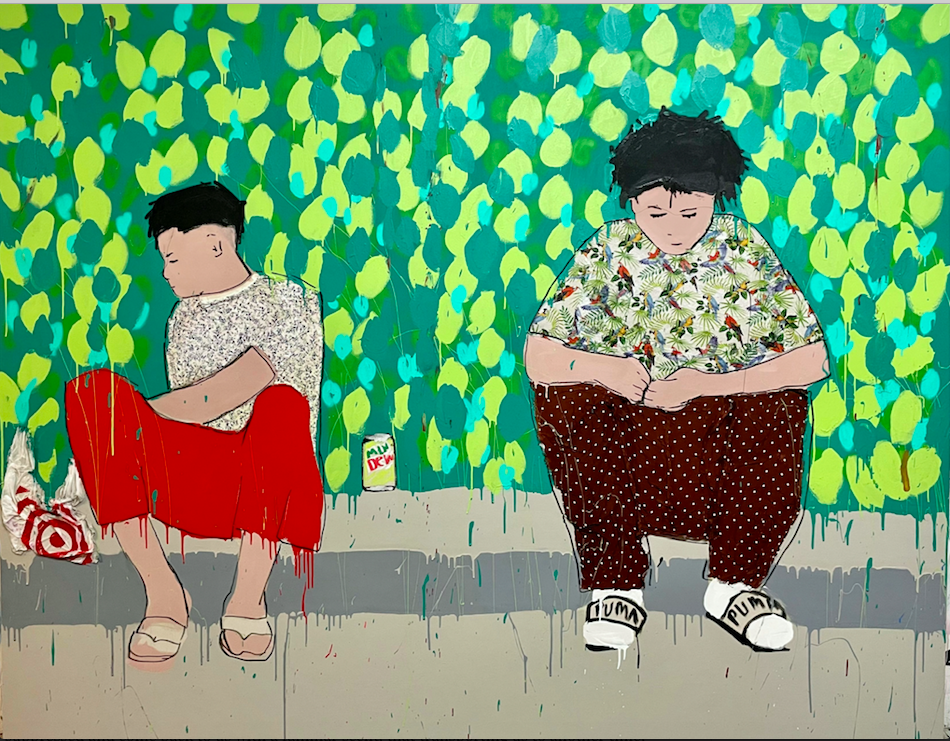
“Waiting by the Clusia Hedge” 96×80″
It goes back to the first question you asked me; we must be real; we have to be real. Life is too short to be living the reality of someone else. I know it’s tough for people to find their way in this world because of all the paradigms and everything that it’s been built as a civilized society. I want to tell people and show them that things in life are not that hard. If you look at my work, it’s very simple. It’s a matter of opening our eyes, ears, and hearts and finding the simple things in life. I think you will find many answers to questions that people think are very complex, but they are not. We just have to open our eyes as we never know when the answers will come.”
Hermes Berrío is happy to have encountered something more meaningful to him than he could have imagined in this world, his wife, and children. He is forever thankful to have gratitude as an artist. “Many times, artists pass away and never reach the moment of gratefulness.”
The biggest takeaway after meeting Hermes, would be the notion of periodically putting yourself on pause. Quietly take in the activity happening right there around you. This connectivity gels you with people you may not have invited to the moment but come to perhaps realize how each one of them sews a community together, uniquely giving energy that envelopes itself into the fabric of our lives.
Hermes received his BFA from New York University in 2005. In 2019, a grant from the Ruth and Harold Chenven Foundation. In 2018 and again in 2022, he was awarded a grant from the Pollock-Krasner Foundation. His works can be found in galleries and institutions in the US, Colombia, Spain, Germany, Mexico, Australia, and Canada. In May, in a group exhibit in London at Cromwell Place. Hermes’ work is currently on display at the Coral Springs Museum of Art and the Breach Gallery in Miami.
